MaryAnn Bernal's Blog, page 183
April 11, 2015
Oldest Neanderthal DNA Found in Italian Skeleton
Charles Q. Choi
Live Science
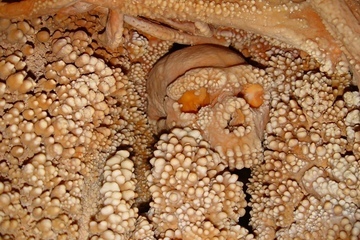 The remains of the so-called Altamura Man, now considered a Neanderthal, encrusted with calcite formations in Altamura, Italy.
The remains of the so-called Altamura Man, now considered a Neanderthal, encrusted with calcite formations in Altamura, Italy.
Credit: Ministry of Cultural Heritage and Activities, Superintendent of the Archeology of Puglia.
The calcite-encrusted skeleton of an ancient human, still embedded in rock deep inside a cave in Italy, has yielded the oldest Neanderthal DNA ever found.
These molecules, which could be up to 170,000 years old, could one day help yield the most complete picture yet of Neanderthal life, researchers say.
the most complete picture yet of Neanderthal life, researchers say.
Although modern humans are the only remaining human lineage, many others once lived on Earth. The closest extinct relatives of modern humans were the Neanderthals, who lived in Europe and Asia until they went extinct about 40,000 years ago. Recent findings revealed that Neanderthals interbred with ancestors of today's Europeans when modern humans began spreading out of Africa — 1.5 to 2.1 percent of the DNA of anyone living outside Africa today is Neanderthal in origin. [Image Gallery: Our Closest Human Ancestor]
humans are the only remaining human lineage, many others once lived on Earth. The closest extinct relatives of modern humans were the Neanderthals, who lived in Europe and Asia until they went extinct about 40,000 years ago. Recent findings revealed that Neanderthals interbred with ancestors of today's Europeans when modern humans began spreading out of Africa — 1.5 to 2.1 percent of the DNA of anyone living outside Africa today is Neanderthal in origin. [Image Gallery: Our Closest Human Ancestor]
In 1993, scientists found an extraordinarily intact skeleton of an ancient human amidst the stalactites and stalagmites of the limestone cave of Lamalunga, near Altamura in southern Italy — a discovery they said had the potential to reveal new clues about Neanderthals.
"The Altamura man represents the most complete skeleton of a single nonmodern human ever found," study co-author Fabio Di Vincenzo, a paleoanthropologist at Sapienza University of Rome, told Live Science. "Almost all the bony elements are preserved and undamaged."
The Altamura skeleton bears a number of Neanderthal traits, particularly in the face and the back of the skull. However, it also possesses features that usually aren't seen in Neanderthals — for instance, its brow ridges were even more massive than those of Neanderthals.These differences made it difficult to tell which human lineage the Altamura man might have belonged to. Moreover, the Altamura skeleton remains partially embedded in rock, making it difficult to analyze.
Now, new research shows that DNA from a piece of the skeleton's right shoulder blade suggests the Altamura fossil was a Neanderthal. The shape of this piece of bone also looks Neanderthal, the researchers said.
In addition, the scientists dated the skeleton to about 130,000 to 170,000 years old. This makes it the oldest Neanderthal from which DNA has ever been extracted. (These bones are not the oldest known Neanderthal fossils — the oldest ones ever found are about 200,000 years old. This isn't the oldest DNA ever extracted from a human, either; that accolade goes to 400,000-year-old DNA collected from relatives of Neanderthals.)
The bone is so old that its DNA is too degraded for the researchers to sequence the fossil's genome — at least with current technology . However, they noted that next-generation DNA-sequencing technologies might be capable of such a task, which "could provide important results on the Neanderthal genome," study co-author David Caramelli, a molecular anthropologist at the University of Florence in Italy, told Live Science.
. However, they noted that next-generation DNA-sequencing technologies might be capable of such a task, which "could provide important results on the Neanderthal genome," study co-author David Caramelli, a molecular anthropologist at the University of Florence in Italy, told Live Science.
Whereas previous fragmentary fossils of different Neanderthals provided a partial picture of what life was like for Neanderthals, the Altamura skeleton could help paint a more complete portrait of a Neanderthal — for instance, it could reveal more details about Neanderthals' genetics, anatomy, ecology and lifestyle, the researchers said.
paint a more complete portrait of a Neanderthal — for instance, it could reveal more details about Neanderthals' genetics, anatomy, ecology and lifestyle, the researchers said.
"We have a nearly complete human fossil skeleton to describe and study in detail. It is a dream," Di Vincenzo said. "His morphology offers a rare glimpse on the earliest phase of the evolutionary history of Neanderthals and on one of the most crucial events in human evolution. He can help us better understand when — and, in particular, how — Neanderthals evolved."
The scientists detailed their findings online March 21 in the Journal of Human Evolution.
March 21 in the Journal of Human Evolution.
<img height="1" width="1" alt="" style="display:none;" src="http://maryannbernal.blogspot.com//ww..." />

Live Science
 The remains of the so-called Altamura Man, now considered a Neanderthal, encrusted with calcite formations in Altamura, Italy.
The remains of the so-called Altamura Man, now considered a Neanderthal, encrusted with calcite formations in Altamura, Italy.Credit: Ministry of Cultural Heritage and Activities, Superintendent of the Archeology of Puglia.
The calcite-encrusted skeleton of an ancient human, still embedded in rock deep inside a cave in Italy, has yielded the oldest Neanderthal DNA ever found.
These molecules, which could be up to 170,000 years old, could one day help yield
 the most complete picture yet of Neanderthal life, researchers say.
the most complete picture yet of Neanderthal life, researchers say.Although modern
 humans are the only remaining human lineage, many others once lived on Earth. The closest extinct relatives of modern humans were the Neanderthals, who lived in Europe and Asia until they went extinct about 40,000 years ago. Recent findings revealed that Neanderthals interbred with ancestors of today's Europeans when modern humans began spreading out of Africa — 1.5 to 2.1 percent of the DNA of anyone living outside Africa today is Neanderthal in origin. [Image Gallery: Our Closest Human Ancestor]
humans are the only remaining human lineage, many others once lived on Earth. The closest extinct relatives of modern humans were the Neanderthals, who lived in Europe and Asia until they went extinct about 40,000 years ago. Recent findings revealed that Neanderthals interbred with ancestors of today's Europeans when modern humans began spreading out of Africa — 1.5 to 2.1 percent of the DNA of anyone living outside Africa today is Neanderthal in origin. [Image Gallery: Our Closest Human Ancestor] In 1993, scientists found an extraordinarily intact skeleton of an ancient human amidst the stalactites and stalagmites of the limestone cave of Lamalunga, near Altamura in southern Italy — a discovery they said had the potential to reveal new clues about Neanderthals.
"The Altamura man represents the most complete skeleton of a single nonmodern human ever found," study co-author Fabio Di Vincenzo, a paleoanthropologist at Sapienza University of Rome, told Live Science. "Almost all the bony elements are preserved and undamaged."
The Altamura skeleton bears a number of Neanderthal traits, particularly in the face and the back of the skull. However, it also possesses features that usually aren't seen in Neanderthals — for instance, its brow ridges were even more massive than those of Neanderthals.These differences made it difficult to tell which human lineage the Altamura man might have belonged to. Moreover, the Altamura skeleton remains partially embedded in rock, making it difficult to analyze.
Now, new research shows that DNA from a piece of the skeleton's right shoulder blade suggests the Altamura fossil was a Neanderthal. The shape of this piece of bone also looks Neanderthal, the researchers said.
In addition, the scientists dated the skeleton to about 130,000 to 170,000 years old. This makes it the oldest Neanderthal from which DNA has ever been extracted. (These bones are not the oldest known Neanderthal fossils — the oldest ones ever found are about 200,000 years old. This isn't the oldest DNA ever extracted from a human, either; that accolade goes to 400,000-year-old DNA collected from relatives of Neanderthals.)
The bone is so old that its DNA is too degraded for the researchers to sequence the fossil's genome — at least with current technology
 . However, they noted that next-generation DNA-sequencing technologies might be capable of such a task, which "could provide important results on the Neanderthal genome," study co-author David Caramelli, a molecular anthropologist at the University of Florence in Italy, told Live Science.
. However, they noted that next-generation DNA-sequencing technologies might be capable of such a task, which "could provide important results on the Neanderthal genome," study co-author David Caramelli, a molecular anthropologist at the University of Florence in Italy, told Live Science.Whereas previous fragmentary fossils of different Neanderthals provided a partial picture of what life was like for Neanderthals, the Altamura skeleton could help
 paint a more complete portrait of a Neanderthal — for instance, it could reveal more details about Neanderthals' genetics, anatomy, ecology and lifestyle, the researchers said.
paint a more complete portrait of a Neanderthal — for instance, it could reveal more details about Neanderthals' genetics, anatomy, ecology and lifestyle, the researchers said."We have a nearly complete human fossil skeleton to describe and study in detail. It is a dream," Di Vincenzo said. "His morphology offers a rare glimpse on the earliest phase of the evolutionary history of Neanderthals and on one of the most crucial events in human evolution. He can help us better understand when — and, in particular, how — Neanderthals evolved."
The scientists detailed their findings online
 March 21 in the Journal of Human Evolution.
March 21 in the Journal of Human Evolution.<img height="1" width="1" alt="" style="display:none;" src="http://maryannbernal.blogspot.com//ww..." />


Published on April 11, 2015 08:21
Mr. Chuckles caught up with Author and blogger Carol Hedges while stirring the Wizard's Cauldron
 The Wizard speaks:
The Wizard speaks:Inhabitants of the Twitterverse, at least this little segment of it, will have noticed the effervescent wit of Carol Hedges - author and keen, active blogger - around the place.
Rumoured to be extremely helpful and supportive of other Indies and active in her local community, I had always wanted to invite her around the Cauldron and was introduced to her quite recently.
Her books are popular and, as you will see, she enjoys a good laugh and a joke. I caught up with her as she bedded in the roses somewhere in the south of England and we spoke via the Wizphone.
Read more
Published on April 11, 2015 07:51
'Harry Potter-style' wizardry school comes to life in Poland
BBC World News
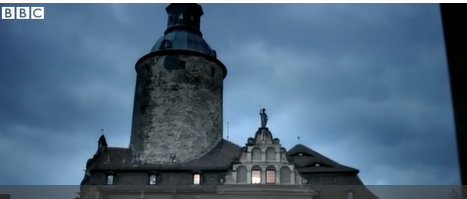
For Harry Potter fans, a castle in Czocha in south-western Poland has been transformed into a school of wizardry.
For four days sorcerers are taking part in live action role plays where they can "tame magical creatures in the forest".

For Harry Potter fans, a castle in Czocha in south-western Poland has been transformed into a school of wizardry.
For four days sorcerers are taking part in live action role plays where they can "tame magical creatures in the forest".
Published on April 11, 2015 06:37
History Trivia - Llywelyn ap Iorweth, Prince of Gwynedd, dies
April 11
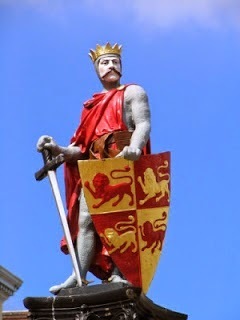
1240 Llywelyn ap Iorweth, Prince of Gwynedd, died. Llywelyn the Great managed to unite most of Wales under his control, but most of his reign was marked by conflict with King John of England, whose illegitimate daughter Joan was Llywelyn's wife.

1471 King Edward IV of England conquered London from Henry VI.

1689 William III and Mary II were crowned as joint sovereigns of Britain.

1240 Llywelyn ap Iorweth, Prince of Gwynedd, died. Llywelyn the Great managed to unite most of Wales under his control, but most of his reign was marked by conflict with King John of England, whose illegitimate daughter Joan was Llywelyn's wife.

1471 King Edward IV of England conquered London from Henry VI.

1689 William III and Mary II were crowned as joint sovereigns of Britain.
Published on April 11, 2015 01:00
April 10, 2015
Robert the Bruce tomb relics displayed at Abbotsford
BBC News
 It was destroyed almost 500 years ago but for the first time the remaining fragments of Robert the Bruce's ornate tomb are to be displayed together.After the monument was destroyed during the Reformation, relics found their way into various collections around the country.
It was destroyed almost 500 years ago but for the first time the remaining fragments of Robert the Bruce's ornate tomb are to be displayed together.After the monument was destroyed during the Reformation, relics found their way into various collections around the country.
One of them was that of Sir Walter Scott and from Saturday his Borders home will host the unique collection.
It will be accompanied by a 3D digital image of the warrior king's grave.
The computer-generated picture will form part of the exhibition, titled The Lost Tomb of Robert the Bruce, at Abbotsford, near Melrose.
It has been created using the original artefacts and the latest archaeological research by various Scottish heritage bodies.
Kirsty Archer-Thompson, heritage and engagement manger for the Abbotsford Trust said: "It is fitting that Sir Walter Scott, the man who ignited such passion for Scottish history, acquired a piece of this archaeological jigsaw puzzle.
"Everyone involved in the project is thrilled that the public can see this precious collection of remaining fragments back together again."
 Sir Walter Scott lived at Abbotsford, near Melrose, in the Scottish Borders Following his death in 1329, Bruce was buried at Dunfermline Abbey but the grave was destroyed in 1560 when the church was ransacked by Reformers.
Sir Walter Scott lived at Abbotsford, near Melrose, in the Scottish Borders Following his death in 1329, Bruce was buried at Dunfermline Abbey but the grave was destroyed in 1560 when the church was ransacked by Reformers.
During the early 19th century what were believed to be Bruce's remains were discovered with fragments of carved and gilded marble from the vanished tomb.
These relics subsequently found their way into museum collections in Edinburgh, Glasgow and Dunfermline.
At least one fragment fell into the hands of Sir Walter Scott.
Historians believe he may have acquired it the same time that he acquired entrance hall panelling from Dunfermline Abbey, together with a cast of Bruce's skull.
The exhibition runs until 30 November.
 It was destroyed almost 500 years ago but for the first time the remaining fragments of Robert the Bruce's ornate tomb are to be displayed together.After the monument was destroyed during the Reformation, relics found their way into various collections around the country.
It was destroyed almost 500 years ago but for the first time the remaining fragments of Robert the Bruce's ornate tomb are to be displayed together.After the monument was destroyed during the Reformation, relics found their way into various collections around the country. One of them was that of Sir Walter Scott and from Saturday his Borders home will host the unique collection.
It will be accompanied by a 3D digital image of the warrior king's grave.
The computer-generated picture will form part of the exhibition, titled The Lost Tomb of Robert the Bruce, at Abbotsford, near Melrose.
It has been created using the original artefacts and the latest archaeological research by various Scottish heritage bodies.
Kirsty Archer-Thompson, heritage and engagement manger for the Abbotsford Trust said: "It is fitting that Sir Walter Scott, the man who ignited such passion for Scottish history, acquired a piece of this archaeological jigsaw puzzle.
"Everyone involved in the project is thrilled that the public can see this precious collection of remaining fragments back together again."
 Sir Walter Scott lived at Abbotsford, near Melrose, in the Scottish Borders Following his death in 1329, Bruce was buried at Dunfermline Abbey but the grave was destroyed in 1560 when the church was ransacked by Reformers.
Sir Walter Scott lived at Abbotsford, near Melrose, in the Scottish Borders Following his death in 1329, Bruce was buried at Dunfermline Abbey but the grave was destroyed in 1560 when the church was ransacked by Reformers. During the early 19th century what were believed to be Bruce's remains were discovered with fragments of carved and gilded marble from the vanished tomb.
These relics subsequently found their way into museum collections in Edinburgh, Glasgow and Dunfermline.
At least one fragment fell into the hands of Sir Walter Scott.
Historians believe he may have acquired it the same time that he acquired entrance hall panelling from Dunfermline Abbey, together with a cast of Bruce's skull.
The exhibition runs until 30 November.
Published on April 10, 2015 07:27
Toxic oceans played a huge part in prehistoric mass extinction
Walt BonnerFox News
 A woman looks up at a replica skeleton during a preparation for an exhibition titled "The Dawn of the Dinosaurs", displaying fossils, replicas of the creatures and skeletons from the Triassic age, at Roppongi Hills in Tokyo July 2, 2010. (REUTERS/Yuriko Nakao)
A woman looks up at a replica skeleton during a preparation for an exhibition titled "The Dawn of the Dinosaurs", displaying fossils, replicas of the creatures and skeletons from the Triassic age, at Roppongi Hills in Tokyo July 2, 2010. (REUTERS/Yuriko Nakao)
An oxygen-depleted ocean played a huge role in the prehistoric mass-extinction that occurred at the end of the Triassic Period, new research revealed. According to a study to be published in Geology, changes in the biochemical balance of the Panathalassic Ocean– one of two oceans that surrounded the supercontinent Pangea – were a critical factor in the extinction where half of the Earth’s animal, plant, and marine life died.
The Triassic period saw the emergence of dinosaurs, who became the dominant animal life form during the subsequent Jurassic period.
“This is significant because it is the first time an open ocean setting was investigated,” Study Co-author Jessica Whiteside of the University of Southampton in the U.K., told FoxNews.com. “Previous work focused on shallow coastal areas in what is now Europe, where regional effects could predominate. Thus, by studying the Panathalassic Ocean, we provided strong evidence that these environmental changes were global in nature.”
When Pangea broke apart 201 million years ago, volcanic rifts spewed massive amounts of carbon dioxide into the atmosphere. While this created a rise in temperatures from the greenhouse effect, the huge spike in carbon dioxide brought about a massive chemical bio-imbalance in the Earth’s oceans. When the oceans’ surface waters that were exposed to the sun (the photic zone) lost oxygen, they became toxic by way of hydrogen sulfide – an extremely poisonous chemical produced by microorganisms that don’t need oxygen to survive. This process is called photic zone euxinia (PZE).
To find rocks that lay at the bottom of the Panathalassic Ocean during this period, the researchers travelled to the Queen Charlotte Islands off the coast of British Columbia, Canada. “We of course did not know if the Canadian rocks would contain evidence of PZE, only that they were deposited in well-mixed and rather deep oceanic waters of the Panathalassic Ocean, in contrast to earlier studies that [focused on] terrestrial and very shallow marine sediments,” Whiteside told FoxNews.com. “We wanted to test the hypothesis that PZE was more widespread than just the shallow marine environment, and therefore of potential global, rather than local, significance.” The team knew that if there was evidence of PZE, the rocks were comprised of the right sediment to preserve the indicative molecules.
To find these molecules, which are so small they couldn’t even be seen under a light microscope, the team had to take the sediment samples to a lab. After chemically isolating the fossilized organic cells from the sediment in the lab, Whiteside and her colleagues measured the molecules (or biomarkers) from the cells’ fat membranes.
“In their structural formulae, these molecules record environmental conditions,” Whiteside explained. “Because we know how they affect the environment today, and how the environment affects them, we can infer what happened in the geologic past if we know their concentrations.” For example, the researchers knew that the presence of green sulfur bacteria today indicates an environment where there is light and hydrogen sulfide, but little oxygen (green sulfur bacteria is found in volcanic hot springs, salt marsh sediments, and in the depths of freshwater lakes). As noted earlier, hydrogen sulfide is a by-product of anaerobic organisms and is extremely toxic to most forms of life.
“Thus,” concluded Whiteside, “if we find biomarker evidence for green sulfur bacteria in the geologic record, we can infer that oxygen is depleted and levels of hydrogen sulfide also increased during that time. Our study demonstrates that for the mass extinction 201 million years ago, hydrogen sulfide poisoning disrupted the distribution of nutrients and altered food chains essential for the survival of marine ecosystems in the area. All this, from tiny bits of fat.”
She notes it took dozens of thousands of years for the rise in carbon dioxide and greenhouse gases to bring about the mass extinction, which on a geologic timescale is nearly instantaneous.
Though there were no polar ice caps at the end of the Triassic– and the carbon dioxide levels were higher– Whiteside warns that it bears a strong resemblance to the world we live in today, thanks to the burning of fossil fuels. “The amount of CO2 released during the extinction, and the speed at which it was released, is very similar to what is occurring today, and thus serves as a cautionary tale for what might be in store for us in the near future.”
 A woman looks up at a replica skeleton during a preparation for an exhibition titled "The Dawn of the Dinosaurs", displaying fossils, replicas of the creatures and skeletons from the Triassic age, at Roppongi Hills in Tokyo July 2, 2010. (REUTERS/Yuriko Nakao)
A woman looks up at a replica skeleton during a preparation for an exhibition titled "The Dawn of the Dinosaurs", displaying fossils, replicas of the creatures and skeletons from the Triassic age, at Roppongi Hills in Tokyo July 2, 2010. (REUTERS/Yuriko Nakao)An oxygen-depleted ocean played a huge role in the prehistoric mass-extinction that occurred at the end of the Triassic Period, new research revealed. According to a study to be published in Geology, changes in the biochemical balance of the Panathalassic Ocean– one of two oceans that surrounded the supercontinent Pangea – were a critical factor in the extinction where half of the Earth’s animal, plant, and marine life died.
The Triassic period saw the emergence of dinosaurs, who became the dominant animal life form during the subsequent Jurassic period.
“This is significant because it is the first time an open ocean setting was investigated,” Study Co-author Jessica Whiteside of the University of Southampton in the U.K., told FoxNews.com. “Previous work focused on shallow coastal areas in what is now Europe, where regional effects could predominate. Thus, by studying the Panathalassic Ocean, we provided strong evidence that these environmental changes were global in nature.”
When Pangea broke apart 201 million years ago, volcanic rifts spewed massive amounts of carbon dioxide into the atmosphere. While this created a rise in temperatures from the greenhouse effect, the huge spike in carbon dioxide brought about a massive chemical bio-imbalance in the Earth’s oceans. When the oceans’ surface waters that were exposed to the sun (the photic zone) lost oxygen, they became toxic by way of hydrogen sulfide – an extremely poisonous chemical produced by microorganisms that don’t need oxygen to survive. This process is called photic zone euxinia (PZE).
To find rocks that lay at the bottom of the Panathalassic Ocean during this period, the researchers travelled to the Queen Charlotte Islands off the coast of British Columbia, Canada. “We of course did not know if the Canadian rocks would contain evidence of PZE, only that they were deposited in well-mixed and rather deep oceanic waters of the Panathalassic Ocean, in contrast to earlier studies that [focused on] terrestrial and very shallow marine sediments,” Whiteside told FoxNews.com. “We wanted to test the hypothesis that PZE was more widespread than just the shallow marine environment, and therefore of potential global, rather than local, significance.” The team knew that if there was evidence of PZE, the rocks were comprised of the right sediment to preserve the indicative molecules.
To find these molecules, which are so small they couldn’t even be seen under a light microscope, the team had to take the sediment samples to a lab. After chemically isolating the fossilized organic cells from the sediment in the lab, Whiteside and her colleagues measured the molecules (or biomarkers) from the cells’ fat membranes.
“In their structural formulae, these molecules record environmental conditions,” Whiteside explained. “Because we know how they affect the environment today, and how the environment affects them, we can infer what happened in the geologic past if we know their concentrations.” For example, the researchers knew that the presence of green sulfur bacteria today indicates an environment where there is light and hydrogen sulfide, but little oxygen (green sulfur bacteria is found in volcanic hot springs, salt marsh sediments, and in the depths of freshwater lakes). As noted earlier, hydrogen sulfide is a by-product of anaerobic organisms and is extremely toxic to most forms of life.
“Thus,” concluded Whiteside, “if we find biomarker evidence for green sulfur bacteria in the geologic record, we can infer that oxygen is depleted and levels of hydrogen sulfide also increased during that time. Our study demonstrates that for the mass extinction 201 million years ago, hydrogen sulfide poisoning disrupted the distribution of nutrients and altered food chains essential for the survival of marine ecosystems in the area. All this, from tiny bits of fat.”
She notes it took dozens of thousands of years for the rise in carbon dioxide and greenhouse gases to bring about the mass extinction, which on a geologic timescale is nearly instantaneous.
Though there were no polar ice caps at the end of the Triassic– and the carbon dioxide levels were higher– Whiteside warns that it bears a strong resemblance to the world we live in today, thanks to the burning of fossil fuels. “The amount of CO2 released during the extinction, and the speed at which it was released, is very similar to what is occurring today, and thus serves as a cautionary tale for what might be in store for us in the near future.”
Published on April 10, 2015 07:16
History Trivia - Ludovico Sforza handed over to the French
April 10

837 Comet 1P/837 F1 (Halley) approached within 0.0334 AUs of Earth.
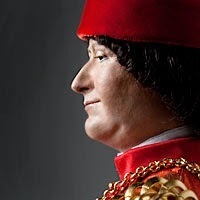
1500 Ludovico Sforza was captured by the Swiss troops at Novara and was handed over to the French.
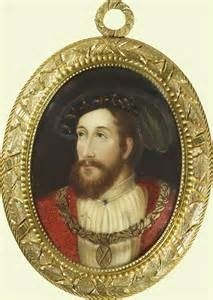
1512 James V of Scotland was born. His only legitimate child to survive to adulthood was Mary, Queen of Scots. His illegitimate son, the Earl of Moray, became regent of Scotland when Mary abdicated.

837 Comet 1P/837 F1 (Halley) approached within 0.0334 AUs of Earth.

1500 Ludovico Sforza was captured by the Swiss troops at Novara and was handed over to the French.

1512 James V of Scotland was born. His only legitimate child to survive to adulthood was Mary, Queen of Scots. His illegitimate son, the Earl of Moray, became regent of Scotland when Mary abdicated.
Published on April 10, 2015 01:30
April 9, 2015
Charles I's portrait painter gets first exhibition
The GuardianNational Portrait Gallery display of Cornelius Johnson’s 17th-century work will include rarely seen portraits of royal children
 The future King Charles II, by Cornelius Johnson. Photograph: /National Portrait Gallery A largely forgotten portrait painter who was commissioned by the elite of early 17th-century England, including Charles I, is finally to get his moment in the sun.
The future King Charles II, by Cornelius Johnson. Photograph: /National Portrait Gallery A largely forgotten portrait painter who was commissioned by the elite of early 17th-century England, including Charles I, is finally to get his moment in the sun.
The National Portrait Gallery in London has announced it is to stage the first display of works by the court painter Cornelius Johnson.
Few people will be aware of Johnson. “But he really does deserve to be better known on so many different counts,” said curator Karen Hearn. “His paintings are really sympathetic, there is a delicacy about them.”
In his day Johnson was a star and he became Charles I’s official “picture-drawer” in 1632. The NPG display will include rarely seen portraits of the royal children who became Charles II, James II and Mary, Princess of Orange – all of them pale, doe-eyed and rather miserable.
“They do look weighed down by their fine clothes and the expectations placed on them,” said Hearn “They have these lives of exile and disorder ahead of them. They are tiny figures in these settings.”
The portrait of Mary shows her aged about seven or eight; two years later she was married to 14-year-old William, later William II, Prince of Orange.
 Mary, Princess of Orange, by Cornelius Johnson. Photograph: National Portrait Gallery Johnson was a prolific and highly successful portrait painter, and his works hang in a number of country houses, often owned by the descendants of the original sitters. British public collections are stuffed full of his works, but mostly they are in the stores, not on the walls.
Mary, Princess of Orange, by Cornelius Johnson. Photograph: National Portrait Gallery Johnson was a prolific and highly successful portrait painter, and his works hang in a number of country houses, often owned by the descendants of the original sitters. British public collections are stuffed full of his works, but mostly they are in the stores, not on the walls.
One big reason for that is his bad luck to be around at the same time as Anthony van Dyck. He arrived in England in 1632 to work for the king and overshadowed all his contemporaries. His dynamism and glamour meant later generations have not looked far beyond his dominating brilliance.
Hearn believes that is a shame. “One reason why Johnson deserves more attention is that he is very good,” she said. “He is painting people as they are, so they are rather quiet. When you look at a Johnson picture you benefit from looking at it for a while and drawing out the personality of the sitter.”
Hearn said Johnson was particularly good in the details of dress – the textiles, embroidery and lace. He was also one of the first British painters to sign and date his paintings, a godsend for dress historians who can trace and date the fashions of the day.
 The Capel family, by Cornelius Johnson. Photograph: National Portrait Gallery The civil war curtailed Johnson’s career in England but he was resourceful, and at 50 he emigrated to the Netherlands where he reinvented himself as a Dutch portraitist.
The Capel family, by Cornelius Johnson. Photograph: National Portrait Gallery The civil war curtailed Johnson’s career in England but he was resourceful, and at 50 he emigrated to the Netherlands where he reinvented himself as a Dutch portraitist.
“Until I really started delving I hadn’t realised how successful he was in Holland,” said Hearn. “He was painting mayors and the aristocracy. There had been this idea of ‘poor old Johnson’ going off to the Netherlands and doing a bit of painting. But he died a wealthy man.”
The NPG display will have eight painted portraits and six prints from the NPG collections and three paintings from Tate, all of them hardly ever seen publicly.
“He has been so long in the shadows of art history,” said Hearn. “At last Cornelius Johnson’s time has come.”
• Cornelius Johnson: Charles I’s Forgotten Painter, is a free display in Room 6 of the NPG, London, from 15 April to 13 September.
 The future King Charles II, by Cornelius Johnson. Photograph: /National Portrait Gallery A largely forgotten portrait painter who was commissioned by the elite of early 17th-century England, including Charles I, is finally to get his moment in the sun.
The future King Charles II, by Cornelius Johnson. Photograph: /National Portrait Gallery A largely forgotten portrait painter who was commissioned by the elite of early 17th-century England, including Charles I, is finally to get his moment in the sun.The National Portrait Gallery in London has announced it is to stage the first display of works by the court painter Cornelius Johnson.
Few people will be aware of Johnson. “But he really does deserve to be better known on so many different counts,” said curator Karen Hearn. “His paintings are really sympathetic, there is a delicacy about them.”
In his day Johnson was a star and he became Charles I’s official “picture-drawer” in 1632. The NPG display will include rarely seen portraits of the royal children who became Charles II, James II and Mary, Princess of Orange – all of them pale, doe-eyed and rather miserable.
“They do look weighed down by their fine clothes and the expectations placed on them,” said Hearn “They have these lives of exile and disorder ahead of them. They are tiny figures in these settings.”
The portrait of Mary shows her aged about seven or eight; two years later she was married to 14-year-old William, later William II, Prince of Orange.
 Mary, Princess of Orange, by Cornelius Johnson. Photograph: National Portrait Gallery Johnson was a prolific and highly successful portrait painter, and his works hang in a number of country houses, often owned by the descendants of the original sitters. British public collections are stuffed full of his works, but mostly they are in the stores, not on the walls.
Mary, Princess of Orange, by Cornelius Johnson. Photograph: National Portrait Gallery Johnson was a prolific and highly successful portrait painter, and his works hang in a number of country houses, often owned by the descendants of the original sitters. British public collections are stuffed full of his works, but mostly they are in the stores, not on the walls.One big reason for that is his bad luck to be around at the same time as Anthony van Dyck. He arrived in England in 1632 to work for the king and overshadowed all his contemporaries. His dynamism and glamour meant later generations have not looked far beyond his dominating brilliance.
Hearn believes that is a shame. “One reason why Johnson deserves more attention is that he is very good,” she said. “He is painting people as they are, so they are rather quiet. When you look at a Johnson picture you benefit from looking at it for a while and drawing out the personality of the sitter.”
Hearn said Johnson was particularly good in the details of dress – the textiles, embroidery and lace. He was also one of the first British painters to sign and date his paintings, a godsend for dress historians who can trace and date the fashions of the day.
 The Capel family, by Cornelius Johnson. Photograph: National Portrait Gallery The civil war curtailed Johnson’s career in England but he was resourceful, and at 50 he emigrated to the Netherlands where he reinvented himself as a Dutch portraitist.
The Capel family, by Cornelius Johnson. Photograph: National Portrait Gallery The civil war curtailed Johnson’s career in England but he was resourceful, and at 50 he emigrated to the Netherlands where he reinvented himself as a Dutch portraitist.“Until I really started delving I hadn’t realised how successful he was in Holland,” said Hearn. “He was painting mayors and the aristocracy. There had been this idea of ‘poor old Johnson’ going off to the Netherlands and doing a bit of painting. But he died a wealthy man.”
The NPG display will have eight painted portraits and six prints from the NPG collections and three paintings from Tate, all of them hardly ever seen publicly.
“He has been so long in the shadows of art history,” said Hearn. “At last Cornelius Johnson’s time has come.”
• Cornelius Johnson: Charles I’s Forgotten Painter, is a free display in Room 6 of the NPG, London, from 15 April to 13 September.
Published on April 09, 2015 08:50
History Trivia - Henry V crowned King of England.
April 9
 475 Byzantine Emperor Basiliscus issued a circular letter (Enkyklikon) to the bishops of his empire, supporting the Monophysite Christological position.
475 Byzantine Emperor Basiliscus issued a circular letter (Enkyklikon) to the bishops of his empire, supporting the Monophysite Christological position.
 1413 Henry V was crowned King of England.
1413 Henry V was crowned King of England.
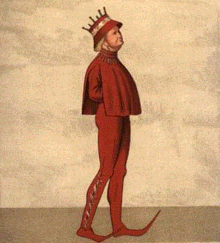 1440 Christopher of Bavaria was appointed King of Denmark.
1440 Christopher of Bavaria was appointed King of Denmark.
 475 Byzantine Emperor Basiliscus issued a circular letter (Enkyklikon) to the bishops of his empire, supporting the Monophysite Christological position.
475 Byzantine Emperor Basiliscus issued a circular letter (Enkyklikon) to the bishops of his empire, supporting the Monophysite Christological position.  1413 Henry V was crowned King of England.
1413 Henry V was crowned King of England.  1440 Christopher of Bavaria was appointed King of Denmark.
1440 Christopher of Bavaria was appointed King of Denmark.
Published on April 09, 2015 01:30
April 8, 2015
History Trivia - Winchester Cathedral dedicated
April 8

217 Roman Emperor Caracalla was assassinated, and succeeded by his Praetorian Guard prefect, Marcus Opellius Macrinus.

1093 The new Winchester Cathedral was dedicated by Walkelin.

1364 Charles V crowned King of France. He led France in recovery from the devastation of the first part of the Hundred Years' War.

217 Roman Emperor Caracalla was assassinated, and succeeded by his Praetorian Guard prefect, Marcus Opellius Macrinus.

1093 The new Winchester Cathedral was dedicated by Walkelin.

1364 Charles V crowned King of France. He led France in recovery from the devastation of the first part of the Hundred Years' War.
Published on April 08, 2015 01:30



